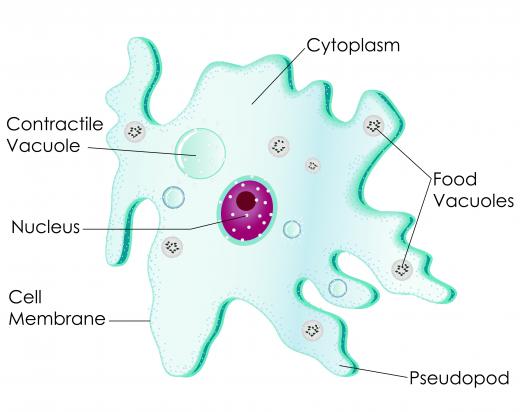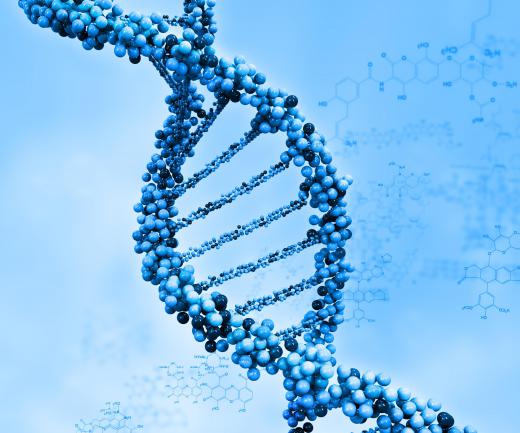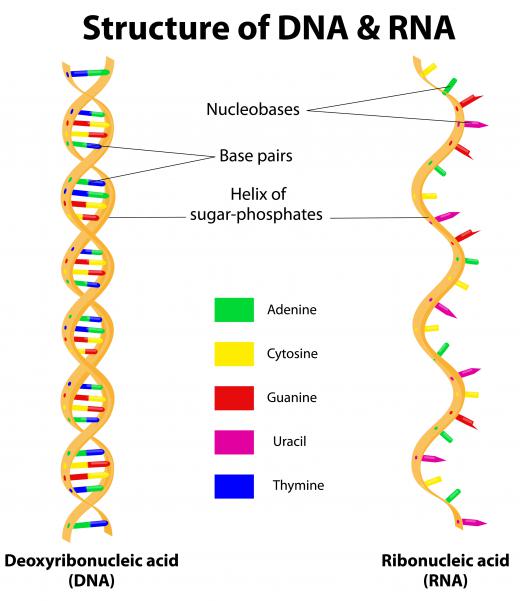What is Messenger RNA?
Messenger ribonucleic acid, commonly called messenger RNA or mRNA, is an RNA molecule that encodes a chemical "blueprint" for the synthesis of a protein. Messenger RNA contains a copy of the genetic data contained on a strand of DNA. DNA contains the summation of the primary genetic information of a cell, and is stored in the cell's nucleus. mRNA functions to transport that data out of the nucleus and into the cytoplasm of a cell where proteins can be assembled.
Messenger RNA is single-stranded, as opposed to DNA, which has two strands arranged in a double-helix. Like DNA, mRNA molecules are composed of nucleotides, the building blocks of nucleic acids. Different nucleotides, when arranged in certain sequences, provide the template code used for the production of proteins. Triplet groups of three nucleotides on a strand of mRNA are known as codons; each codon contains the code for a single amino acid. Proteins are made up of amino acids.

There are four different nucleotides that can exist on a strand of messenger RNA: adenine, uracil, guanine, and cytosine. Because of this, there are 64 possible triplet groups, or codons, containing templates for different amino acids. There are, however, only 20 different amino acids; some codons code for the same amino acids. Scientists have identified which amino acid that each codon on a strand of mRNA provides a template for. The uracil-adenine-guanine codon, for example, codes for an amino acid that signals the end of the protein template.

The genetic information from DNA is transferred over to messenger RNA through a process called transcription, which has three steps. In initiation, the double-helix of DNA is "unzipped" into two separate strands. Next is elongation, in which mRNA nucleotides are assembled by proteins using one strand of the unzipped DNA as a template. This stage is similar to the process by which DNA divides and replicates. Transcription concludes with the termination phase, in which the assembly proteins reach a series of nucleotides that signal them to stop adding on to the messenger RNA.

Following transcription, the messenger RNA is modified by more proteins so that it is completely ready to serve as a genetic template for a protein. The process by which the messenger RNA template is interpreted and proteins are produced is called translation. Translation occurs in ribosomes, specialized cellular bodies that produce proteins. The ribosomes produce amino acids based on the templates given by the codons in the mRNA. Chemical interactions among those amino acids give them the structure that allows them to function as proteins, which are essential to nearly every living system.
AS FEATURED ON:
AS FEATURED ON:













Discuss this Article
Post your comments